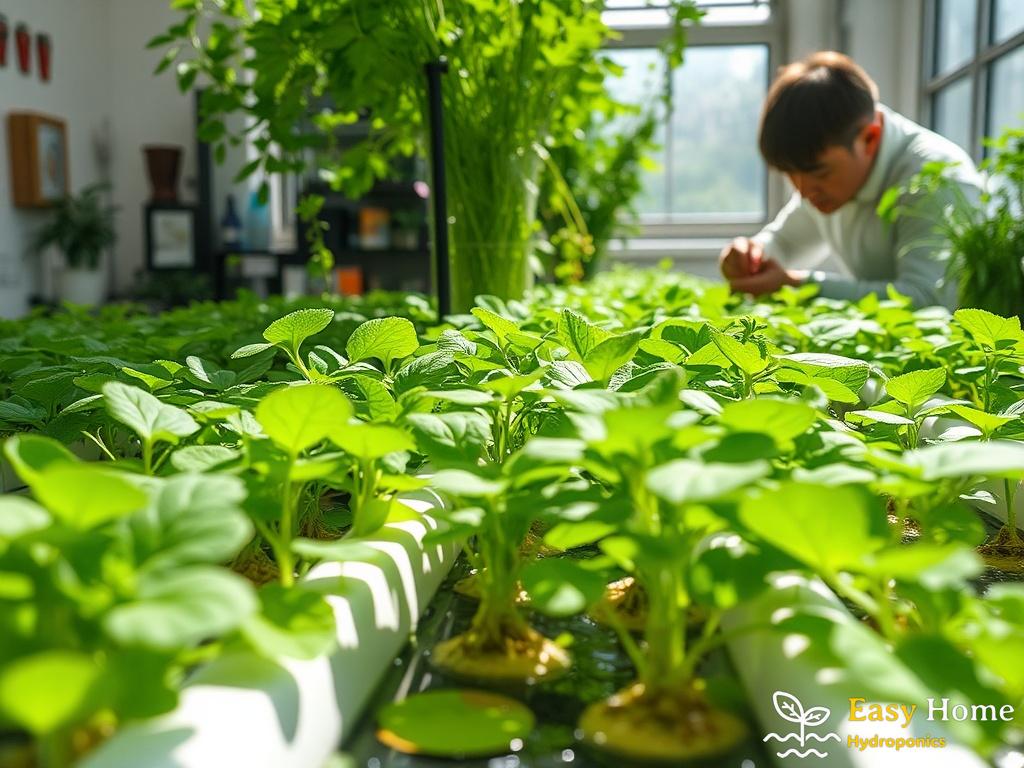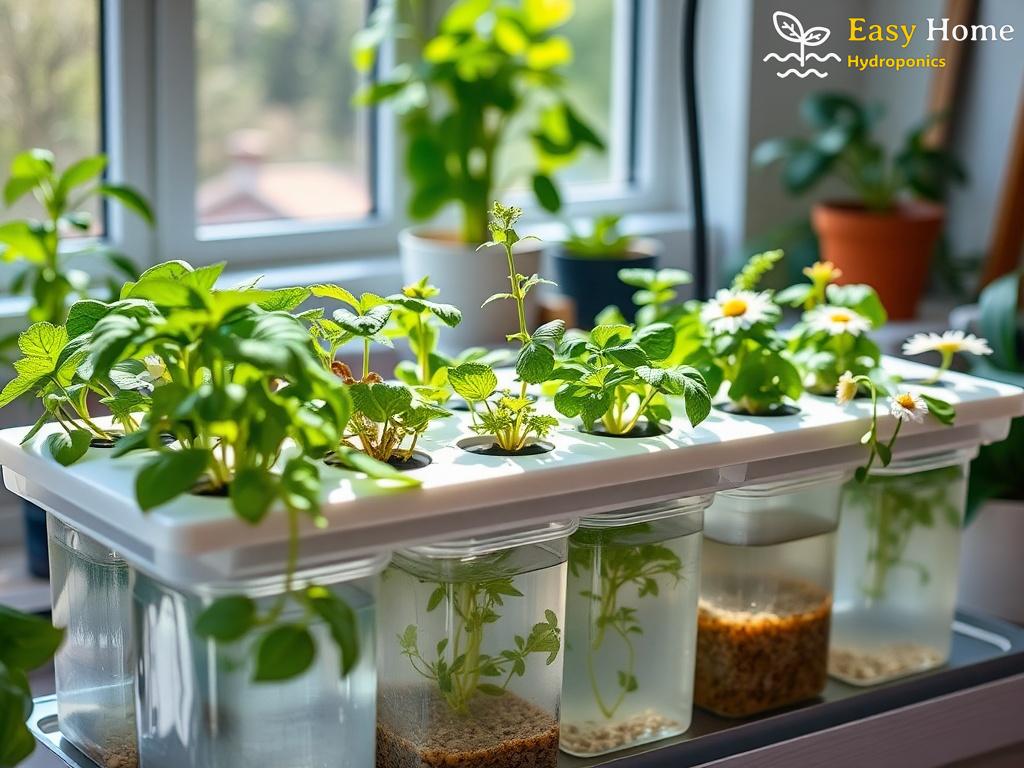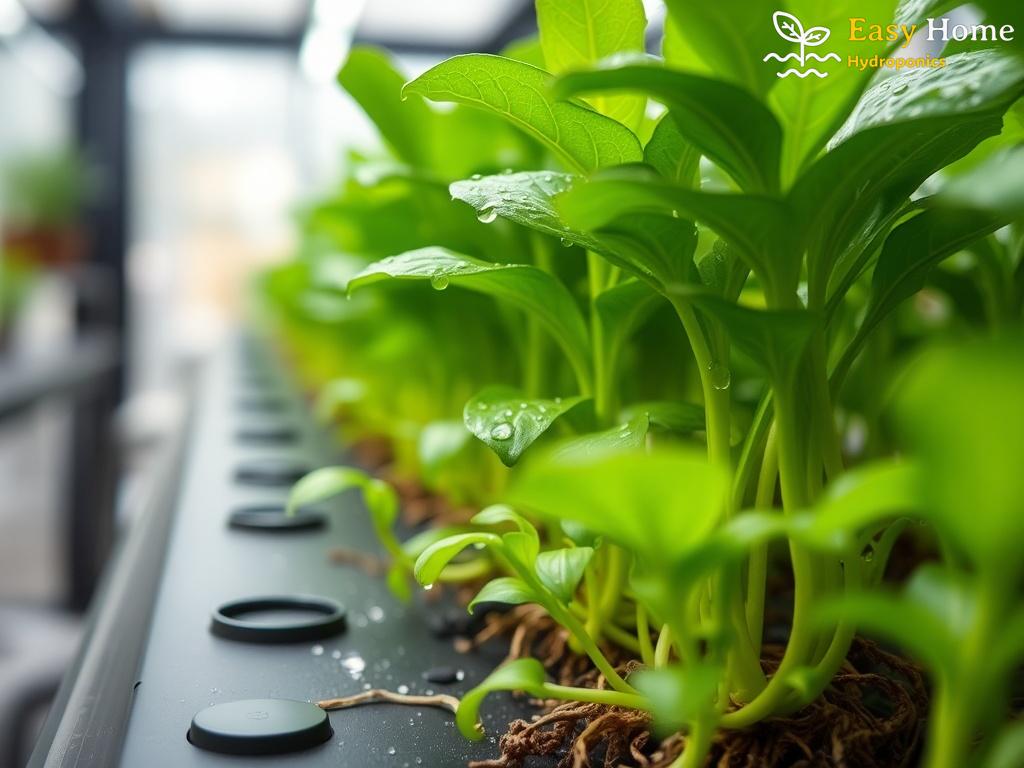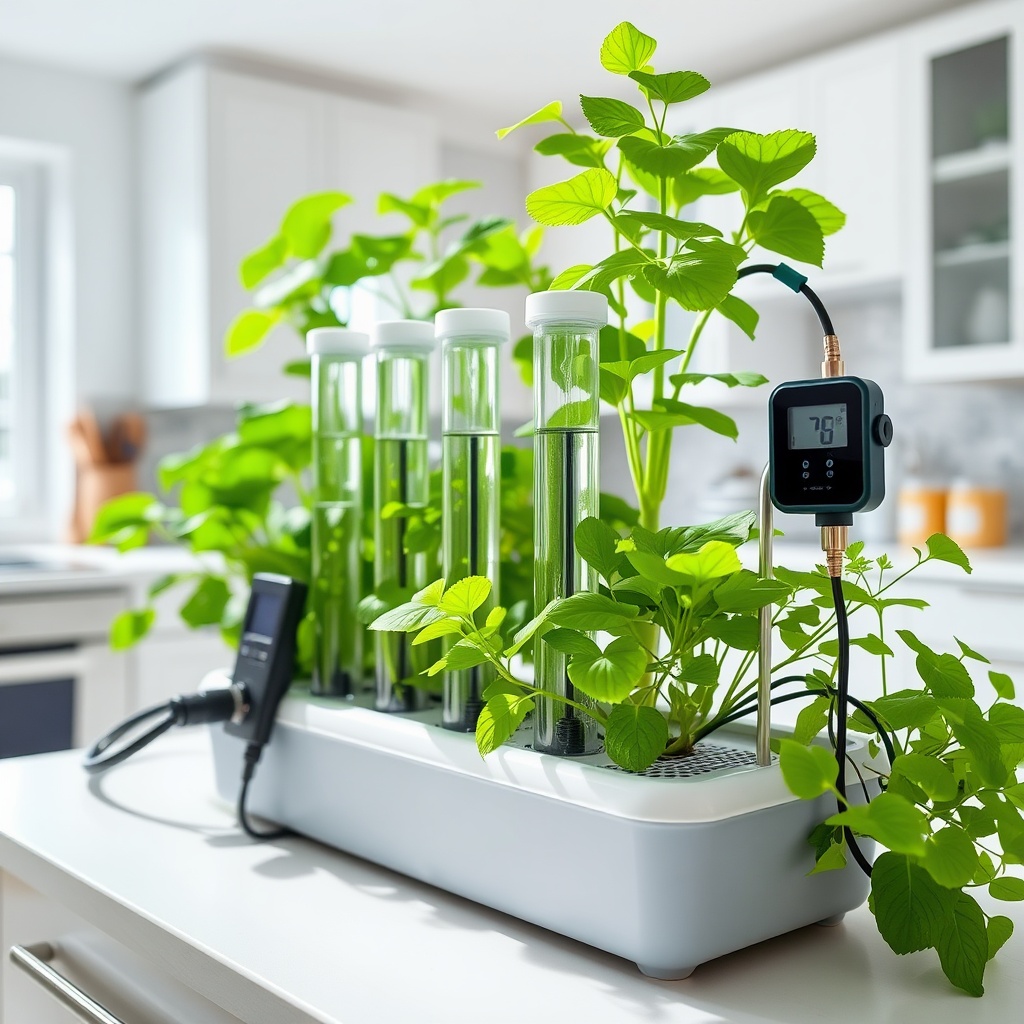Unlocking Nature: Essential Nutrients for Herbal Growth

Medicinal herbs are not just pretty plants; they are complex organisms that require a well-balanced diet to thrive in a hydroponic environment. Just like humans need essential vitamins and minerals, herbs have specific nutrient requirements that can significantly impact their growth, potency, and flavor. Whether you are cultivating basil for its aromatic leaves or growing echinacea for its medicinal properties, understanding these nutritional needs is key to unlocking the full potential of your herbal garden.
One of the most fascinating aspects of hydroponics is the ability to control the nutrient solution precisely. This control allows you to tailor the nutrient delivery to meet the specific needs of each herb, leading to healthier plants and more robust yields. But what exactly do these nutrients do, and how can you ensure your herbs are getting the right mix?
In the realm of hydroponic gardening, the nutrient solution is often referred to as the lifeblood of the plants. Here are the crucial components that every herbal gardener should know:
- Nitrogen (N): Essential for leaf growth and overall plant vigor.
- Phosphorus (P): Vital for root development and flowering.
- Potassium (K): Helps regulate water uptake and improves disease resistance.
- Calcium (Ca): Important for cell wall structure and growth.
- Magnesium (Mg): A core component of chlorophyll, necessary for photosynthesis.
- Sulfur (S): Aids in protein synthesis and overall metabolism.
- Trace Elements: Including iron, manganese, and zinc, which are crucial in smaller quantities for various enzymatic processes.
To help you better understand the importance of these nutrients, here’s a quick comparison of their roles in herbal growth:
| Nutrient | Function | Deficiency Symptoms |
|---|---|---|
| Nitrogen | Leaf growth | Yellowing leaves, stunted growth |
| Phosphorus | Root development | Purple stems, poor flowering |
| Potassium | Water regulation | Wilting, browning leaf edges |
| Calcium | Cell structure | Blossom end rot, tip burn |
| Magnesium | Photosynthesis | Interveinal chlorosis |
Creating a nutrient solution tailored to your medicinal herbs can feel like an art form. The right balance can enhance not only growth rates but also the medicinal properties of your herbs. Here’s a simple guideline to consider when formulating your nutrient solution:
- Start with a base nutrient solution tailored for herbs.
- Adjust the pH to ensure nutrient availability (aim for 5.5-6.5).
- Monitor and adjust EC (Electrical Conductivity) levels to reflect the nutrient concentration needed for your specific herbs.
- Regularly test your nutrient solution and adjust as needed based on plant growth and health.
With the right knowledge and tools, you can unlock the secrets of herbal nutrition and cultivate a thriving hydroponic garden. Remember, the key to successful herbal growth lies in understanding their unique needs and providing them with the essential nutrients they crave.
The Hydroponic Advantage: Customizing Nutrient Solutions
The world of hydroponics opens up a realm of possibilities for home gardeners, especially when it comes to nurturing medicinal herbs. One of the most significant benefits of hydroponic systems is the ability to tailor nutrient solutions specifically for the unique needs of each herb. This customization not only fosters robust plant growth but also enhances the flavor and medicinal qualities of the herbs being cultivated. Let’s delve into how you can harness this advantage to create a thriving herbal garden.
When you cultivate herbs hydroponically, you have the power to adjust the nutrient composition based on the specific life stage and health of your plants. For instance, young seedlings may require a nutrient mix that is rich in nitrogen to promote lush leaf development, while flowering plants necessitate higher phosphorus levels to support blooming. This adaptability is what makes hydroponics an exceptional choice for herb gardening.
The art of customizing nutrient solutions involves understanding the nutritional needs of your herbs at various growth stages. For example, basil thrives when it receives a balanced mix of nitrogen, potassium, and phosphorus. Conversely, echinacea may require more calcium and magnesium during its flowering phase. By monitoring your plants closely and adjusting the nutrient ratios accordingly, you can ensure that each herb reaches its full potential.
Furthermore, the ability to modify the nutrient solution in real-time allows you to respond proactively to any signs of deficiency or excess. For instance, if you notice yellowing leaves, this may indicate a nitrogen deficiency, prompting an immediate adjustment to the nutrient mix. Such responsiveness is pivotal in hydroponic gardening, where plant health can change rapidly.
Modern hydroponic systems often incorporate advanced technology to help gardeners maintain optimal nutrient levels effortlessly. pH meters and EC (Electrical Conductivity) sensors are invaluable tools that provide real-time data on the nutrient solution’s composition. By utilizing these technologies, you can achieve a precise nutrient balance that supports healthy herb growth.
Moreover, many hydroponic setups now offer automatic nutrient dosing systems, enabling you to program nutrient injections based on the specific requirements of your herbs. This level of automation not only saves time but also minimizes the risk of human error, ensuring that your plants receive the exact nutrients they need, right when they need them.
| Nutrient | Role in Herbal Growth | Symptoms of Imbalance |
|---|---|---|
| Nitrogen | Essential for leaf development | Yellowing leaves |
| Phosphorus | Supports root growth and flowering | Poor flowering, stunted growth |
| Potassium | Regulates water uptake | Browning leaf edges |
| Calcium | Strengthens cell walls | Blossom end rot |
| Magnesium | Key for photosynthesis | Interveinal chlorosis |
By leveraging the hydroponic advantage of customized nutrient solutions, you can transform your home garden into a vibrant oasis of medicinal herbs. This unique approach not only enhances the quality of your herbs but also provides a rewarding gardening experience, allowing you to explore the intricate relationships between plants and their nutritional needs.
Feeding Your Greens: The Science Behind Nutrient Ratios
In the fascinating world of hydroponics, the secret to flourishing medicinal herbs lies in the precise balance of nutrient ratios. Each herb has its own unique requirements that can change throughout its lifecycle. This dynamic nature makes it crucial for gardeners to not only provide essential nutrients but to also understand how these nutrients interact with one another. The right ratios can lead to vibrant growth, enhanced flavor, and potent medicinal properties. An imbalance, however, can stifle growth and diminish the quality of your herbs, making knowledge of nutrient ratios a vital aspect of successful hydroponic gardening.
At the heart of nutrient solutions are macronutrients and micronutrients, each playing a pivotal role in plant health. Macronutrients—namely nitrogen, phosphorus, and potassium—are required in larger quantities and are the backbone of plant nutrition. For instance, nitrogen is the champion of leafy growth, while phosphorus is essential for strong roots and vibrant blooms. Potassium, on the other hand, acts as a regulator, ensuring that plants can efficiently absorb water and resist diseases.
But let’s not forget about the micronutrients. Though they are needed in smaller amounts, elements like iron, manganese, and zinc are crucial for various enzymatic processes that contribute to overall plant vitality. Striking the right ratio between these two categories is essential. For instance, a nitrogen-heavy solution might boost leaf growth initially, but an excess can lead to poor root development and a weakened plant structure. Understanding and monitoring these ratios not only fosters healthy plants but also optimizes the herbal qualities that make them medicinally valuable.
The beauty of hydroponics lies in its adaptability. As your herbs progress through different growth stages, their nutrient needs will shift. Young seedlings thrive on a nitrogen-rich solution, while flowering herbs demand higher levels of phosphorus to support blooming. Monitoring your plants and adjusting nutrient ratios accordingly is key to unlocking their full potential. This adaptability allows you to respond to signs of deficiency or excess proactively, ensuring your herbs always receive the right balance.
Utilizing technology further enhances your ability to fine-tune these ratios. With tools such as pH meters and EC sensors, you gain insights into the health of your nutrient solution. Automated systems can also take the guesswork out of nutrient dosing, allowing you to maintain optimal ratios effortlessly. By embracing these technological advancements, you can transform your hydroponic garden into a thriving ecosystem of medicinal herbs, rich in flavor and health benefits.
Herbal Harmony: Balancing pH and Nutrients for Optimal Health
In the intricate world of hydroponics, achieving a harmonious balance between pH levels and nutrient concentrations is paramount for the health of your medicinal herbs. Imagine your plants as finely tuned instruments; when every element is perfectly aligned, they produce a symphony of growth, flavor, and medicinal potency. However, even a slight discord—be it an unbalanced pH or nutrient overdose—can lead to a cacophony of problems. This delicate interplay is not just a science; it’s an art that every herbal gardener must master to unlock the full potential of their hydroponic garden.
The pH level of your nutrient solution can significantly influence how well your herbs can absorb the nutrients they need. Most medicinal herbs thrive in a slightly acidic environment, with an optimal pH range of 5.5 to 6.5. When the pH strays outside this range, nutrients can become either unavailable or toxic to the plants. Understanding the importance of pH is akin to understanding the foundation of a house; without a solid base, everything else can falter.
For example, if your pH is too low, it can lead to nutrient lockout, where essential elements like calcium and magnesium become inaccessible to your herbs. Conversely, a high pH can create an environment where iron and manganese are rendered ineffective, leading to deficiencies that manifest as pale leaves or stunted growth. Regular monitoring of pH levels using reliable meters will ensure that your nutrient solution remains in the sweet spot, promoting vigorous growth and robust herbal qualities.
Just as a conductor brings harmony to an orchestra, balancing macronutrients and micronutrients is essential for the overall health of your plants. Each nutrient plays a critical role, and an imbalance can create a dissonance that hampers growth. For instance, an excess of nitrogen can lead to lush foliage but may sacrifice root development, while a deficiency in potassium can reduce disease resistance and water regulation.
To achieve this balance, consider the following guidelines:
- Start with a base nutrient solution: Choose one designed specifically for herbs to ensure a solid foundation.
- Adjust based on growth stages: Seedlings may need higher nitrogen, while flowering plants benefit from increased phosphorus.
- Regularly test and adjust: Utilize pH meters and EC sensors to keep a close eye on nutrient levels and pH, making adjustments as necessary.
By consciously monitoring and adjusting your nutrient solution, you can create an environment where your medicinal herbs not only survive but thrive, bursting with flavor and health-enhancing properties. Remember, the path to herbal harmony requires vigilance, knowledge, and a little bit of patience, but the rewards are undoubtedly worth the effort.
From Seed to Harvest: Nutrient Management Strategies for Success
Embarking on the journey of hydroponic gardening is akin to nurturing a living organism; each phase, from seed germination to full-grown plants ready for harvest, requires a specific nutrient strategy. A deep understanding of the lifecycle of your medicinal herbs will empower you to provide the right nutrients at the right time. This thoughtful approach not only fosters plant health but also maximizes the therapeutic qualities of your herbs. The needs of your plants will evolve, and recognizing these shifts is pivotal for achieving successful yields.
During the initial stages, young seedlings are in a delicate state, demanding a nutrient-rich environment. A nitrogen-heavy solution is often essential, stimulating lush leaf development and ensuring that the young plants establish a robust foundation. As the seedlings mature and begin to flower, their nutrient requirements shift dramatically. This transition calls for a higher concentration of phosphorus and potassium to support blooming and fruiting, enhancing the overall quality of your harvest.
Success in hydroponic gardening hinges on the gardener’s ability to observe and adapt. Regular monitoring of your plants will reveal subtle signs of nutrient deficiencies or excesses, allowing you to adjust your nutrient solution proactively. For instance, if you notice the leaves of your herbs beginning to turn yellow, this could indicate a nitrogen deficiency that requires immediate attention. Alternatively, an abundance of lush foliage with sparse flowering suggests a potential phosphorus deficit.
It’s also important to maintain a careful balance between macronutrients and micronutrients. While macronutrients like nitrogen, phosphorus, and potassium are needed in larger quantities, micronutrients such as iron, manganese, and zinc, though required in smaller amounts, are equally vital for optimal plant health. Ignoring these smaller elements can lead to diminished growth and reduced medicinal properties. Crafting an effective nutrient solution involves understanding this balance and making timely adjustments based on plant health and growth metrics.
| Nutrient | Role | Signs of Imbalance |
|---|---|---|
| Nitrogen | Promotes leafy growth | Yellowing leaves, stunted growth |
| Phosphorus | Supports root and flower development | Poor flowering, purple stems |
| Potassium | Regulates water uptake and boosts disease resistance | Browning leaf edges, wilting |
| Calcium | Strengthens cell walls | Blossom end rot, tip burn |
| Magnesium | Essential for photosynthesis | Interveinal chlorosis |
The final phase of your hydroponic gardening adventure is the harvesting of your carefully nurtured herbs. Timing is crucial; harvesting too early may rob you of the full medicinal potential of your plants, while waiting too long can lead to diminished flavor and potency. Observing the growth patterns and understanding the optimal harvest phase for each herb will ensure you reap the benefits of your efforts.
When it comes to harvesting, the technique employed can also impact the continued health of the plant. For many herbs, such as basil and mint, regular pruning encourages new growth and prevents the plants from becoming woody and unproductive. By following these nutrient management strategies, you not only enhance your gardening success but also cultivate a rich array of medicinal herbs that can elevate your home remedies and culinary creations.




